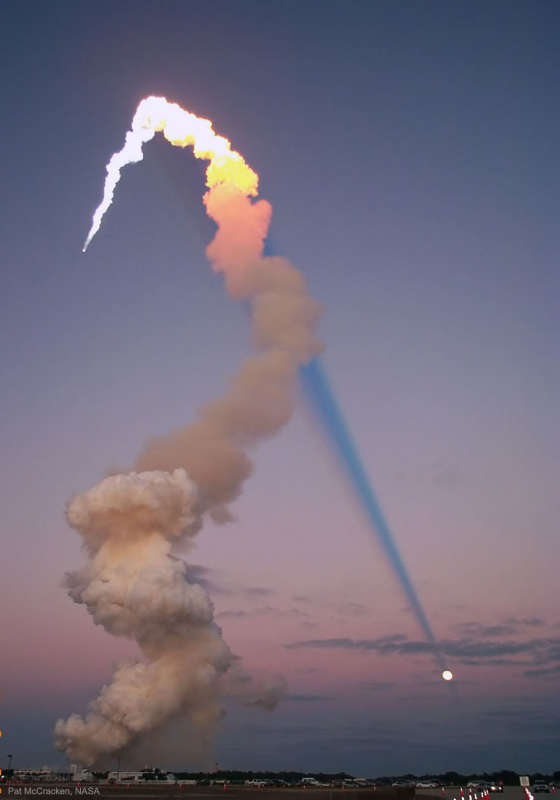Credit & Copyright: Pat McCracken,
NASA
Explanation:
Why would the shadow of a
rocket's launch plume point toward the Moon?
In early 2001 during a launch of the
space shuttle
Atlantis,
the Sun,
Earth,
Moon,
and rocket were all properly aligned for
this photogenic coincidence.
First, for the
space shuttle's plume to cast a long shadow,
the time of day must be either near
sunrise or
sunset.
Only then will the
shadow
be its longest and extend all the way to the
horizon.
Finally, during a
Full Moon, the
Sun and
Moon are on
opposite sides of the sky.
Just after
sunset, for example,
the Sun is slightly below the
horizon, and,
in the other direction, the Moon is slightly above the horizon.
Therefore, as
Atlantis blasted off, just after
sunset,
its shadow projected away from the Sun toward the
opposite horizon, where the
Full Moon happened to be.
Almost Hyperspace:
Random APOD Generator
1999 2000 2001 2002 2003 2004 2005 2006 2007 2008 2009 2010 2011 2012 2013 2014 2015 2016 2017 2018 2019 2020 2021 2022 2023 2024 2025 |
Yanvar' Fevral' Mart Aprel' Mai Iyun' Iyul' Avgust Sentyabr' Oktyabr' Noyabr' Dekabr' |
NASA Web Site Statements, Warnings, and Disclaimers
NASA Official: Jay Norris. Specific rights apply.
A service of: LHEA at NASA / GSFC
& Michigan Tech. U.
|
Publikacii s klyuchevymi slovami:
space shuttle - Moon - shadow - Shattl - Luna
Publikacii so slovami: space shuttle - Moon - shadow - Shattl - Luna | |
Sm. takzhe:
Vse publikacii na tu zhe temu >> | |
